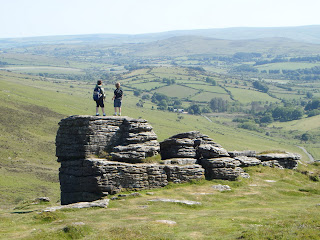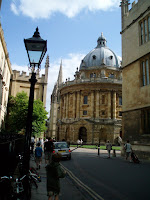Put a fork in 2010 and call it done! The year had many, many high point, as well as some low, but I feel quite secure knowing that the high exceeded the low. By far. Spring 2010 semester was pretty well documented, as was our remarkable trip to England. But other highlights include the following:
~Cape May, NJ
I took the boys to New Jersey to see their cousins and was rewarded with a wonderful week in a Victorian house in Cape May. We went to the beach every morning, and every evening we strolled the boardwalk, played skeeball, and ate ice cream. Would it surprise you to learn that the best ice cream was Minnesota’s own Kemp’s? At the end of the week we drove back to Princeton where the boys and I camped out in the playroom because our usual bedroom was infested with mice. In July. I feel nauseous thinking about it.
~live music
 The U2 concert at TCF Stadium was cancelled when Bono broke his back, which was a huge bummer. Still, we managed to see some live music this past summer. A bunch of us—Scott and Renee, Steve C., Jeff H., and husband John—saw Devo at the Minnesota Zoo. Who knew the bird amphitheater was such an incredible venue. I wouldn’t want to sit on the concrete bleacher seats for a couple hours, but fortunately we were on our feet, dancing and bouncing to new wave. The night was humid and hot, and we marveled at the band, comprised of 50 year old men, as they played earnestly in Tyvek jumpsuits and full face masks. Crazy. Cool.
The U2 concert at TCF Stadium was cancelled when Bono broke his back, which was a huge bummer. Still, we managed to see some live music this past summer. A bunch of us—Scott and Renee, Steve C., Jeff H., and husband John—saw Devo at the Minnesota Zoo. Who knew the bird amphitheater was such an incredible venue. I wouldn’t want to sit on the concrete bleacher seats for a couple hours, but fortunately we were on our feet, dancing and bouncing to new wave. The night was humid and hot, and we marveled at the band, comprised of 50 year old men, as they played earnestly in Tyvek jumpsuits and full face masks. Crazy. Cool.~knitting projects
In addition to a slew of scarves and cowls, I managed to knit a sweater for myself. The project was notable because I learned two new techniques. First, the sweater was knit from the top down. I cast on the neck stitches, knitting in the round and increasing until I had an entire sweater on needles. Then, I knit the sleeves on double point needles, which was nerve-wrecking initially, though I caught on quickly and am hooked. Pictured at left is a sweater I started for Simon.
~lots of great run-around with the boys
 Lots. We hit water parks, museums, skateboard parks, the Highland Pool (not such a bad place to edit a manuscript), movies. At right, the boys are interacting with some sculpture at Franconia.
Lots. We hit water parks, museums, skateboard parks, the Highland Pool (not such a bad place to edit a manuscript), movies. At right, the boys are interacting with some sculpture at Franconia.Fall semester was seriously hellatious. I was required to take four courses, and while no one of them was overly difficult, all together they gave me a run for my sanity. Studio was difficult. The instructor wasn’t very generous with grading and I don’t feel like she pushed us to do our best work. Worse: I will have her again for second semester. Marker rendering was fun, though. Here is my final project--a sparkling wine shop.
 | ||||||||||||||||||||||||||
| Retail space |
As a result, I’ve fallen out of touch with most of my friends and that is not awesome. I resolve to remedy that situation in 2011. I also miss my yoga practice and think resuming it will help me find peace and balance, especially as I try to tackle mounting anxiety. Plus, I want to spend more time here.
I have a good feeling about 2011!






















































